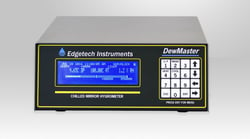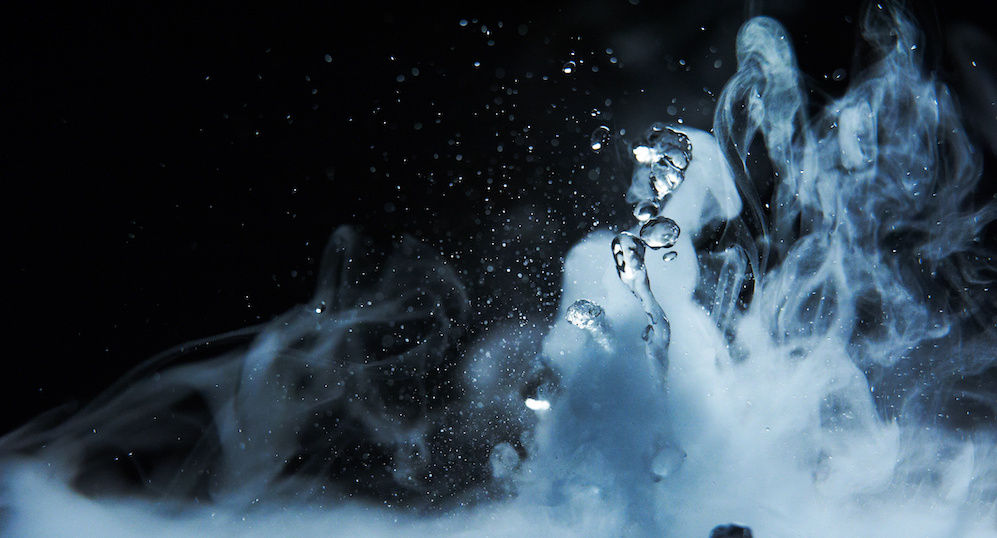Chilled Mirror Hygrometry, a Technology for Process and Lab
Part 1: Chilled Mirror Hygrometry (CMH)
Of all the instrumental methods for measuring the water vapor content of gases, chilled mirror hygrometry (CMH) is one of the most useful owing to its inherent accuracy, unparalleled dynamic range, ease of operation, low maintenance and wide applicability. For instance, the dynamic range of CMH technology spans six orders of magnitude from 0.1 parts per million water vapor by volume to over 100,000 parts per million water vapor by volume, with an accuracy of 1% or better. Further, the chilled mirror hygrometer can be designed using chemically resistant materials when it is to be deployed in corrosive environments.
Since the chilled mirror hygrometer employs a platinum resistance Chilled mirror hygrometer thermometer (PRT) to measure the saturated vapor pressure of water, the measurement can be made traceable to NIST due to the known stability and lack of hysteresis of PRTs. This is especially important in critical industrial processes involving humidity in gases.
Chilled mirror hygrometer thermometer (PRT) to measure the saturated vapor pressure of water, the measurement can be made traceable to NIST due to the known stability and lack of hysteresis of PRTs. This is especially important in critical industrial processes involving humidity in gases.
Dew/frost point temperature is the fundamental measurement unit of a chilled mirror hygrometer. Other humidity related quantities such as relative humidity and mixing ratio can be calculated using the dew/frost point temperature along with gas temperature and pressure. The preferred humidity unit is application specific.
The chilled mirror hygrometer can be used in conjunction with a humidity generator to measure and control the humidity of lab gases. This system can then be used to calibrate secondary humidity sensors such as polymer and inorganic oxide-based sensors or as a known humidity source for environmental and other quality control testing.
Of all the instrumental methods for measuring the water vapor content of gases, chilled mirror hygrometry (CMH) is one of the most useful owing to its inherent accuracy, unparalleled dynamic range, ease of operation, low maintenance and wide applicability. For instance, the dynamic range of CMH technology spans six orders of magnitude from 0.1 parts per million water vapor by volume to over 100,000 parts per million water vapor by volume, with an accuracy of 1% or better. Further, the chilled mirror hygrometer can be designed using chemically resistant materials when it is to be deployed in corrosive environments.
Since the chilled mirror hygrometer employs a platinum resistance
 Chilled mirror hygrometer thermometer (PRT) to measure the saturated vapor pressure of water, the measurement can be made traceable to NIST due to the known stability and lack of hysteresis of PRTs. This is especially important in critical industrial processes involving humidity in gases.
Chilled mirror hygrometer thermometer (PRT) to measure the saturated vapor pressure of water, the measurement can be made traceable to NIST due to the known stability and lack of hysteresis of PRTs. This is especially important in critical industrial processes involving humidity in gases.Dew/frost point temperature is the fundamental measurement unit of a chilled mirror hygrometer. Other humidity related quantities such as relative humidity and mixing ratio can be calculated using the dew/frost point temperature along with gas temperature and pressure. The preferred humidity unit is application specific.
The chilled mirror hygrometer can be used in conjunction with a humidity generator to measure and control the humidity of lab gases. This system can then be used to calibrate secondary humidity sensors such as polymer and inorganic oxide-based sensors or as a known humidity source for environmental and other quality control testing.




